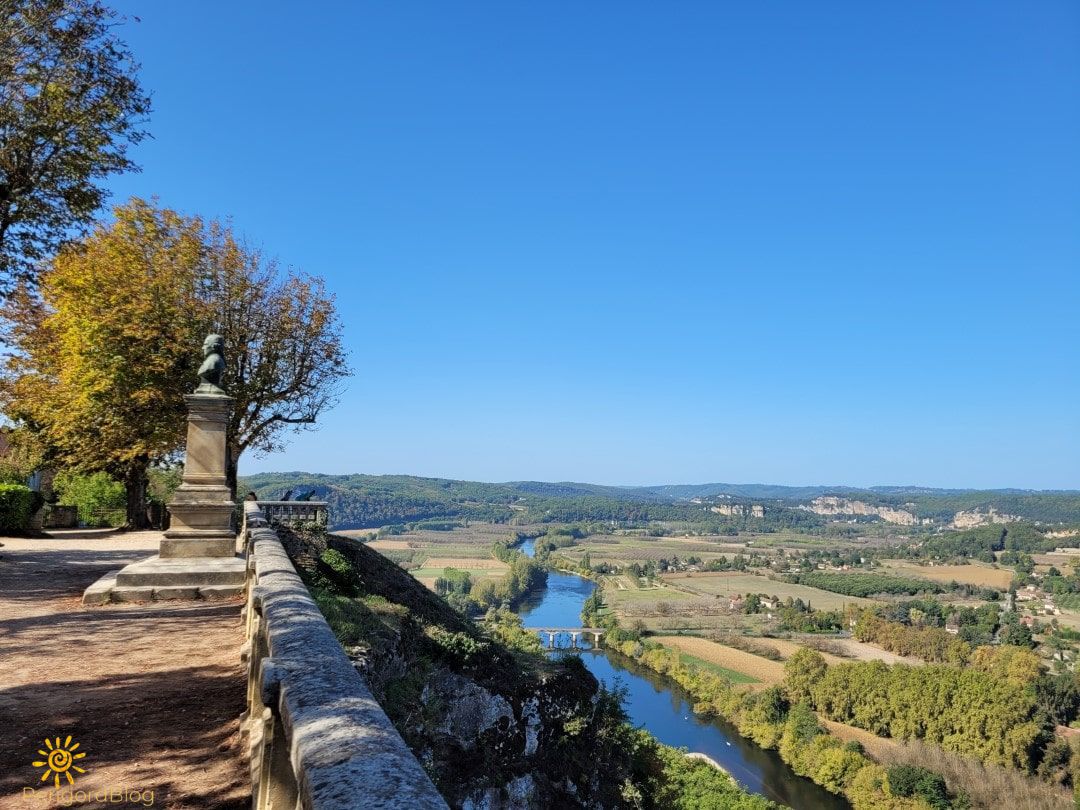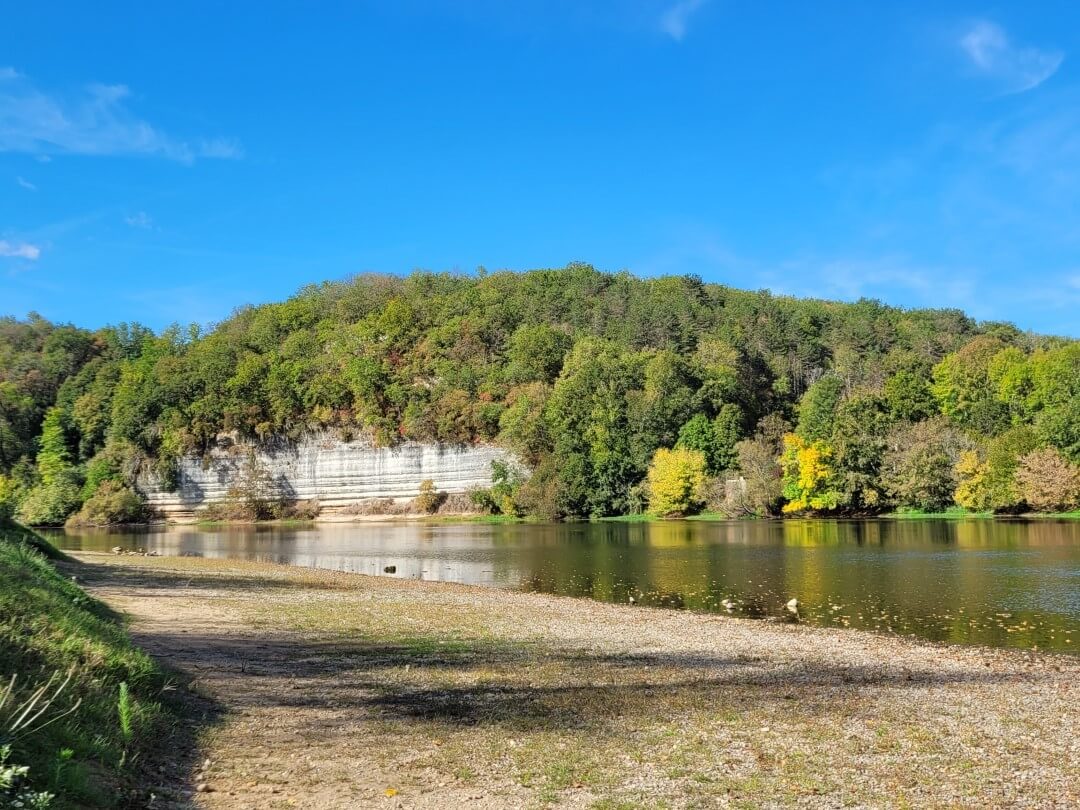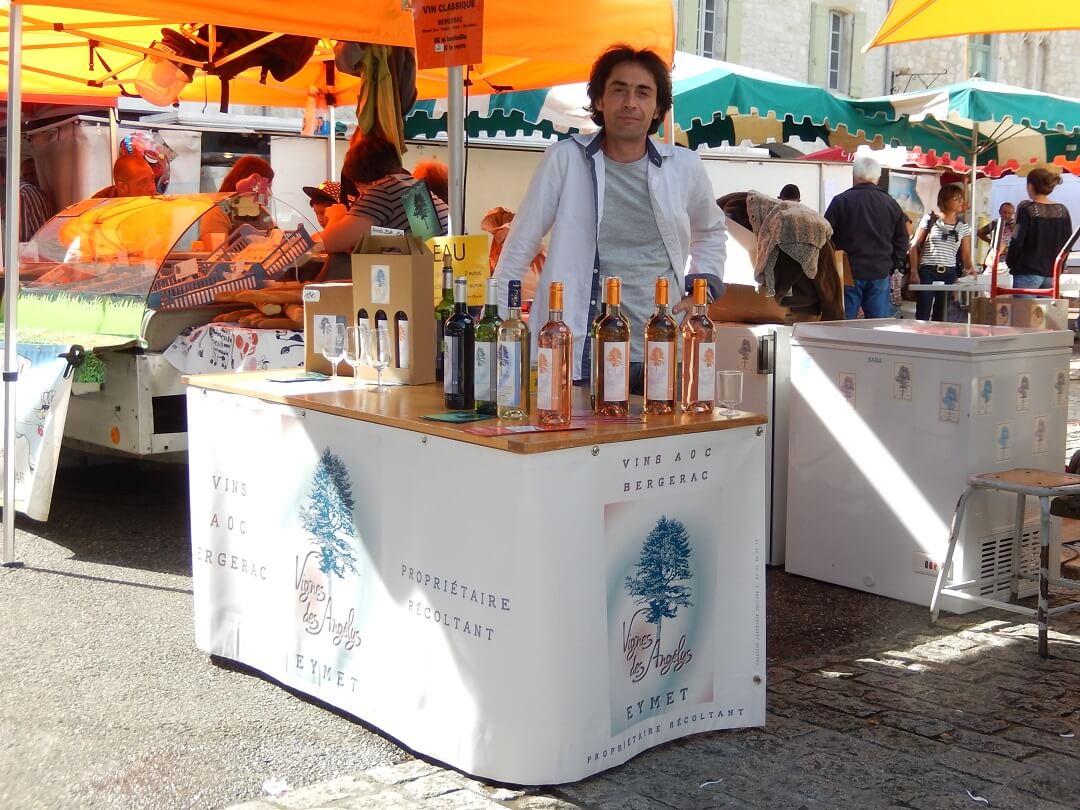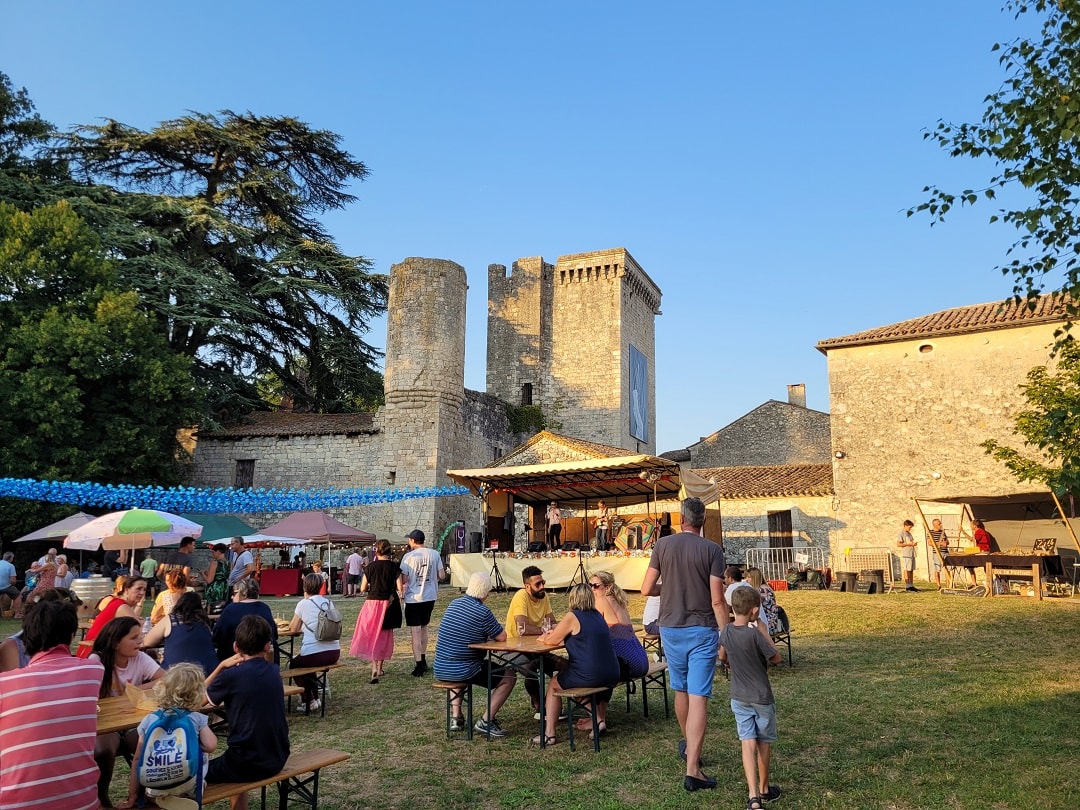Last updated on June 11th, 2024 at 12:14 pm
Hier findest du Antworten auf häufig gestellte Fragen zum Périgord. Hast du weitere Fragen in Bezug auf das Périgord oder planst du einen Urlaub im Périgord? Melde dich bei mir, ich beantworte gerne deine Fragen und berate dich für deinen individuellen Traumurlaub.
Frequently asked questions about the Dordogne:
- Is the Dordogne region the right destination for me?
- Is Dordogne and Périgord the same?
- What do the 4 colours of the Périgord mean?
- Where is the most beautiful place in the Dordogne?
- When is the best time to visit the Dordogne in France?
- Can you swim in the Dordogne river?
- Is wine grown in the Dordogne?
- Where in Dordogne is Bruno the chief of Police investigating?
- What are the 5 most famous specialties of the Périgord?
- What are 5 typical dishes from the Périgord?
- What does the landscape in the Dordogne look like?
- What is the best way to travel to the Dordogne?
- Do I need a car for a holiday in the Dordogne?
Ist das Périgord das richtige Reiseziel für mich?
Magst du auf das «romantische, ländliche Frankreich-Gefühl» und wenn die Uhren etwas langsamer ticken? Fühlst du dich gerne in der Zeit zurückversetzt und liebst du die Natur und die (Vor-)Geschichte? Und verwöhnst du zudem gerne deinen Gaumen mit kulinarischen Köstlichkeiten oder einem feinen Wein? Dann bist du im Périgord genau richtig!
Teile mir deine persönlichen Reisewünsche mit und ich stelle dir deine Traumreise nach Maß zusammen!
Are the Périgord and the Dordogne the same thing?
Yes, the Périgord region and the Dordogne department are now identical in terms of territory. While the department of Dordogne was named after the river that crosses it, Périgord is the old name of this area in the southwest of France. Although the department is officially called Dordogne, its inhabitants are referred to as Périgourdin(e)s.
The Dordogne is about the same size as Cornwall and Devon together. There are around 410,000 people living in the Dordogne (46 people / km2).
What do the four different colors of the Périgord regions mean?
The Périgord was divided into four different regions in the 1990s. Since then, there has been the Périgord Vert (green Périgord, named after its green meadows) in the north, the Périgord Blanc (white Périgord, named after the white limestone typical of the region) in the center, the Périgord Pourpre in the south-west (purple Périgord, named after the wine that is grown here) and the Périgord Noir (black Périgord in the south-east, named after the unkempt oak forests that predominate here).
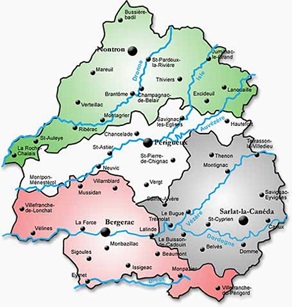
Where is the most beautiful place in the Dordogne?
Most of the sights are located in the Périgord Noir, in the region around Sarlat-la-Canéda. Here you often only need to drive for 5 minutes and you’re already in front of the next castle, the next cave, a secluded Dordogne beach or one of the “most beautiful villages in France”.
But the other regions of the Dordogne are also very beautiful and every corner has its own charm and highlights.
In the high season (especially in August), the main sights in the Périgord Noir can get quite crowded. Then it’s even more worthwhile to visit other regions of the Périgord!
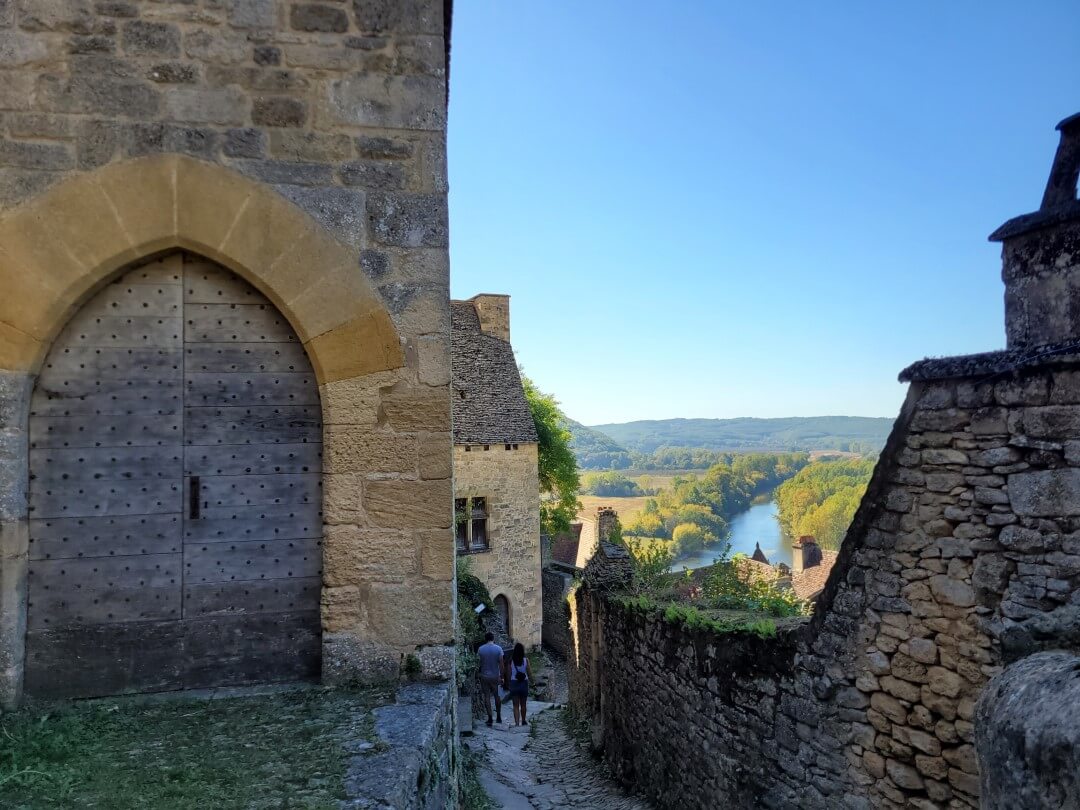
Wann ist die beste Reisezeit für das Périgord?
Im Périgord ist es ab Ostern bis anfangs November schön für einen Urlaub. In den Wintermonaten ist es jedoch oft grau und regnerisch und haben die meisten Sehenswürdigkeiten und auch viele kleine Läden und Restaurants geschlossen.
Im Juli und August ist es am wärmsten (zwischen 30 und 40 Grad) und kann es insbesondere im Périgord Noir auch ganz schön eng werden, weil so viele Besucher unterwegs sind.
In meinem Beitrag Beste Reisezeit Dordogne findest du detaillierte Informationen zu den Reisezeiten im Périgord.
Kann man in der Dordogne baden?
Auf jeden Fall, kann man in der Dordogne schwimmen! Die Dordogne gehört seit 2012 zu den UNESCO-geschützten Biosphärenreservate und somit zu den saubersten Flüssen Frankreichs. Oh ja, auf jeden Fall! Die Dordogne gehört seit 2012 zu den UNESCO-geschützten Biosphärenreservate und somit zu den saubersten Flüssen Frankreichs.
Es gibt unzählige schöne Strände entlang der Dordogne, wie etwa hier in Limeuil am Plage Bac de Sors.
In meinem Beitrag über Limeuil erfährst du mehr über die Strände in Limeuil.
Is wine grown in the Dordogne?
Yes, Périgord Pourpre in the southwest of the Dordogne department is the wine region. Here, 17 AOC wines (wines with a protected designation of origin) are produced. On an area of 11,800 hectares, around 800 winegrowers produce wine in five different colours: dry white wine (blanc sec), sweet white wine (moelleux), liqueur wine (liquoreux), rosé wine (rosé) and red wine (rouge).
Where is Saint-Denis located, the home base of Bruno Chief of police?
The small town of Saint-Denis doesn’t exist, or at least not really. Martin Walker is the author of the detective series about Inspector Brunoand lives in Le Bugue. This is why Le Bugue is home to many of the locations from his detective series about Bruno chief of police. But supplemented with details from many other places in the Dordogne.
So you may well bump into Martin Walker at the market in Le Bugue on a Saturday, for example. Because he also likes to do his shopping there. 😉 That’s exactly what happened to readers of this website during their last holiday in the Dordogne. The photo was taken by Jürgen Friedrich.

What are the 5 most famous specialties of the Périgord?
- The black Périgord truffle
- Poultry products (goose and duck)
- Sweet chestnuts
- Walnuts
- Strawberries.
What are 5 typical dishes from the Périgord?
- The Salade Périgourdine, usually consisting of green salad garnished with walnuts, Gésiers de Canard (baked duck gizzard), slices of dried and smoked duck breast (magret séché et fumé).
- Magret de Canard (smoked duck breast)
- Confit de canard (duck leg, cooked in duck fat)
- Pommes sarladaises (fried potatoes, crispy fried in duck or goose fat and seasoned with fresh parsley and pressed garlic.
- Walnut cake, mainly consisting of: Walnuts, butter, honey, flour and eggs).
Was kann ich im Périgord unternehmen?
Das Périgord hat (fast) für jeden Geschmack etwas zu bieten. Außer für Stadtmenschen, denn die größte Stadt (die Hauptstadt Périgueux) zählt gerade Mal knapp 60.000 Einwohner:innen 😉. Jedoch warten in der Dordogne unzählige Burgen und Höhlen, (prä)historische Stätten und schmucke Gartenanlagen auf dich. Du kannst Kanu fahren auf der Dordogne oder auf der Vézère, wandern, Rad fahren, Wein degustieren, die köstliche regionale Küche genießen oder Märkte und lokale Events wie die berühmten Soirée Gourmands besuchen.
Wie sieht die Landschaft im Périgord aus?
Die Landschaft im Périgord ist grün und leicht hügelig. Während im Südwesten (Périgord Pourpre) sanfte Hügelketten (50 bis ca. 150 Meter Höhe) das Landschaftsbild bestimmen, fallen die Hügel im Périgtortd Noir etwas steiler aus und bewegst du dich dort auf einer Höhe von 150 bis ca. 500 Höhenmetern. Im Périgord Noir herrschen die Eichenwälder vor, während im Périgord Pourpre vor allem Wein angebaut wird. Weiter im Norden (Périgord Blanc und Périgord Pourpre) ist die Landschaft ebenfalls grün und hügelig und gibt es viel Wiesen und Wald (45 % der Gesamtfläche des Périgords ist mit Wald bewachsen und 99 % der Wälder befinden sich in Privatbesitz).
Wusstest du, dass du als Waldbesitzer haftbar bist für deinen Wald? Wenn etwa ein Ast oder gar ein ganzer Baum auf eine Person fällt, haftest du persönlich für den Schaden und kannst auch angeklagt werden. Weitere Infos dazu findest du hierWhat is the best way to travel to the Dordogne?
The easiest way to get there is by plane to Bergerac Airport. Another option is flying to Bordeaux Airport, in that way you can discover Bordeaux as well. From there it will take you about 1,5 hours to get to Bergerac and 2,5 hours to get to Sarlat-la-Canéda (Périgord Noir) by car. Or of course do the whole journey by car.
Or you can take the TGV via Paris to Bordeaux and from there continue by train to Bergerac and Sarlat-la-Canéda or Périgueux.
Do I need a car for a holiday in the Dordogne?
Yes and no. If you have enough time, you can also get around by train, bike or on foot. But to be honest: although a lot is being invested in public transportation, I find car-free travel in the Périgord quite a challenge. If you only want to visit the larger towns such as Bergerac, Sarlat and Périgueux as well as the best-known highlights, that may work without a car. But very often the small towns are unfortunately not accessible by public transport (this is far too expensive in this sparsely populated area, where only 46 people per km2 live).


